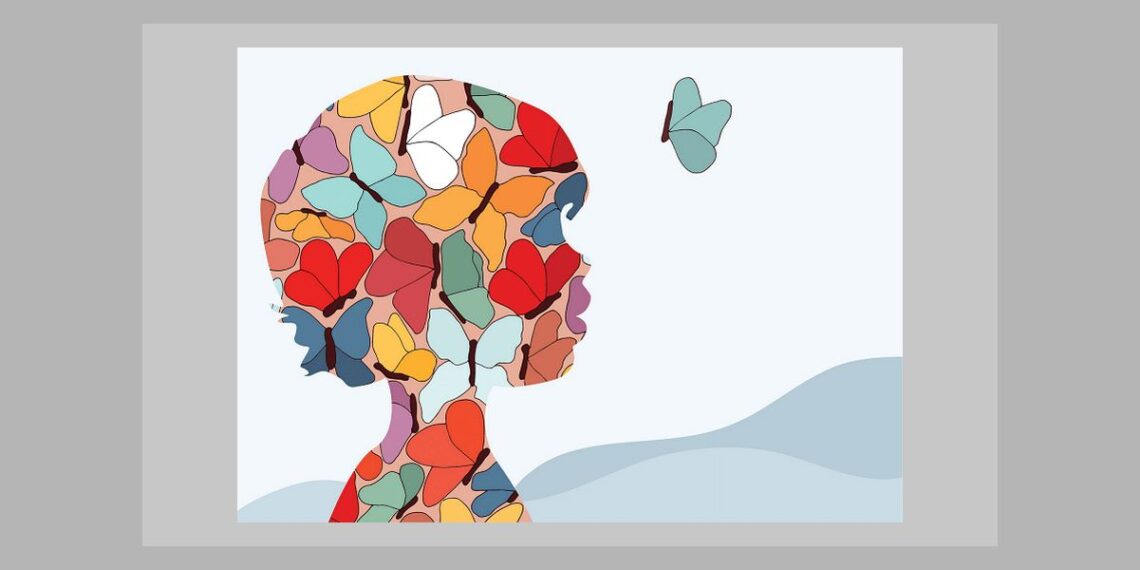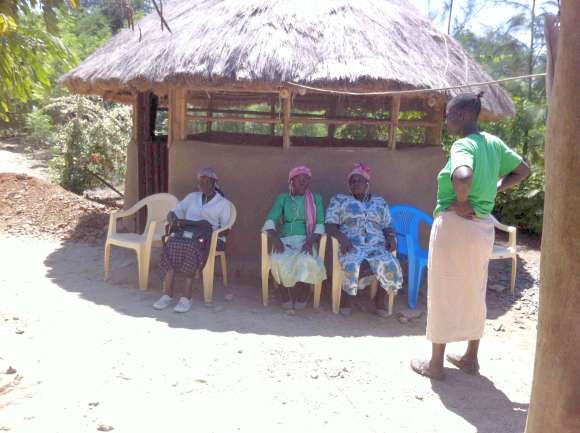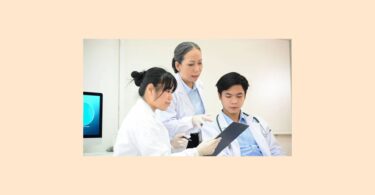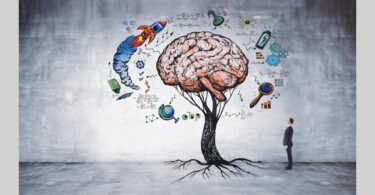By Peter Chappell Hon. FSHom. (with Leilani Ashmole van Koten, MB. ChB.)
Introduction
The development and use of PC Remedies (and latterly Source Light Resonances) as totality remedies for acute and chronic dysfunctions and diseases has led to an exploration into the causes of chronic diseases, including psychological trauma, and the development of a new treatment strategy tailored specifically for western populations.
Initially we had great success in Africa using totality remedies made from Source, which we called PC remedies (Ref 1, 4). These are highly effective in treating epidemic diseases like AIDS and malaria, without individualised prescribing. However when we introduced this same Source technology in the west for chronic disease, with disease specific PC remedies, the results were limited and generally only effective within the context of good quality individualised prescribing (Ref 2). What we came to realise was that this advance, great as it was, was only one step in understanding and resolving chronic diseases and we needed to look deeper. Therefore in 2014 we created a UK research clinic with Greg Meanwell to explore the underlying issues and through this we have come to a deeper understanding of the core causes of chronic disease. This has significant implications for individualised homeopathic prescribing, as well as for medicine generally.
The History of PC Technology and Source Medicine
PC Remedies were originally developed when I went to Ethiopia to work on AIDS in 2001. After months of research I realised that the single epidemic totality remedy for AIDS could not be made or found by conventional methods and I created a new way of making remedies directly from Source (Ref 3). This AIDS remedy, called PC1, is almost 100% effective in treating AIDS in Africa and has been used in over ten thousand cases. Before anti-retroviral drugs (ARVs) were available in Africa this was the only effective treatment for HIV that I am aware of, and it continues to be significant as it is low cost and free of side-effects. PC1 can also be used in combination with ARVs or can be introduced when ARVs start to fail, providing much-needed benefit at this stage.
From this beginning, I developed a single malaria remedy, which has been used successfully with several thousand Africans, and then a range of trauma remedies which have been highly effective in supporting survivors of war and genocide in Africa. More information about this can be found on the Amma Resonance Healing Foundation (ARHF) website (Ref 4) and in my book ‘The Second Simillimum’ (Ref 5).
In order to address the different needs of the western population, Leilani van Koten and I developed a new range of remedies called Source Light Resonances (Ref 1) and an international Research Network to draw together practitioners’ experiences of using these Resonances. Through this work we developed a system for addressing chronic disease in the west – the Source Medicine TIPPs+ System (Ref 6). This includes the treatment of psychological trauma as well as physical trauma, toxins and miasms, addressing the individual’s life experience as well as their epigenetic history. This approach is straightforward to integrate into practice and can significantly enhance individualised homoeopathy through complementing it with a non-individualised methodology.
Audio Resonances
In 2007, through my experience of working with survivors of war and genocide and natural catastrophes over the past ten years, and because of the repeating threats of fast moving epidemics (Swine Flu, Ebola etc), I introduced audio Resonances (with the healing resonant imprint embedded in one minute sound files of music, sea waves or river water sounds). This means that we can now provide rapid world-wide access to streaming Resonances directly from the Source Medicine.Zone website (Ref 1) at minimal cost, for large numbers of people.
The audio format of the Resonances has been extensively tested in Africa and the west, for example our school programme, LEAP (Learning Enhancement in Africa Programme) has been used by six schools in Kenya from 2014 onwards with impressive results. This programme was supported by the regional education officer and reached approximately 2000 children. It addresses common African infections (AIDS, TB, malaria etc), significant inherited and life traumas (being orphaned, war, rape etc) and learning enhancement, using audio Resonances played through a hi-fi to the whole class. The teachers observed a rapid and marked improvement in children’s health, school attendance, attention, concentration and participation in class, as well as significantly better exam results. These improvements have been sustained over the past year.
I also spent time at a clinic in Kenya run by the Amma Resonance Healing Foundation (ARHF, Ref 4) in 2014, treating psychological traumas as well as infectious diseases and injuries. During this time I compared the action of liquids/pills with that of audio Resonances and my conclusion was that liquids, pills and sounds are equally effective as carriers of the Resonances. We monitored the patients each day as they listened to an audio Resonance and they all responded in hours or days. There was one case of a completely blind woman (the middle woman in the picture below) whose eyesight started to come back while first listening to the resonance for AIDS. Her exclamation of “I can see!” awoke the whole clinic staff. I now use pills, liquids and sounds interchangeably according to the situation and patient preference.
Patients outside the clinic in Kenya, wearing headphones to listen to Resonances – a vision of a clinic of the future.
Epigenetics and the Source Medicine TIPPs+ System
Epigenetics is the new science that has arisen out of genetics in the past 25 years or so and ‘…refers to heritable changes in gene expression…’ (ref 7) by which the experiences of ancestors impacts on the lives of current generations. This concept has been a part of homeopathy in the form of miasms for over a century and is becoming more widely recognised as a significant influence on our lives.
A recent study by Haifa University (Ref 8) concluded that the trauma of the Holocaust had been passed down to the grandchildren participating in the study. Given that there were over 50 genocides last century (Ref 9) involving around 100 million people, and that the Holocaust was by no means the largest, this is likely to be a significant epigenetically transmitted trauma for a large proportion of the world population.
In one case the patient was a psychologist in her 50s who had struggled all her life to come to terms with the 19 people in her family who had died in the Holocaust. She had tried numerous therapies and becoming a therapist herself as a consequence. Using the PC War and Genocide Trauma remedy gave her at least a step towards resolution of her history. She described her response as follows: “I was very much surprised. There is a change I had never expected to be possible. I feel a completely different person. A dramatic change … I feel optimism, trust, love of life. It is miraculous …‘ (Ref 3 page 216)
Epigenetics has the potential both substantially to improve our understanding of the issues that need to be resolved in an individual case, and to give homeopathy a more scientific base. Through applying this understanding in our research clinic in 2014, we developed the Source Medicine TIPPs System for identifying and treating the underlying causes of chronic disease in individual cases.
Source Medicine TIPPs+ System
TIPPs+ (Ref 6) is an acronym for Toxins, Infections, Physical trauma and Psychological trauma, plus directly addressing inner states (with Enhancer Resonances) and chronic diseases. In using the TIPPs + System, case taking focusses on identifying and charting the TIPPs events in the individual’s life and in their direct family history. Examples of toxins are lead, mercury, petroleum products and hormones in the food and water supply. Infections are the homeopathic miasms, typically syphilis and gonorrhoea, leprosy, diphtheria, measles, influenza, tuberculosis and malaria. Psychological traumas include war and genocide, rape, lack of nurturing, abuse of power – sexual abuse, domestic violence, institutional trauma etc. (See the American Centre for Disease Control and Prevention ‘Effects of Violence’ study (Ref 18) for a more complete list.) Physical trauma covers general and specific injuries, including broken bones, burns etc.
One metaphor for understanding the different impacts of the Toxins, Infections, Physical and Psychological traumas is as follows: the toxins are the blinkers that stop us seeing alternative routes in living; the traumas are the things we fall over because we’re sticking to a rigid or narrow path; the infections (miasms) are the ways we react to the trauma.
Psychological Trauma
My first book, ‘Emotional Healing with Homeopathy’ (Ref 14), published in 1994, set the tone for my work in homeopathy, my life and the trauma focus in this article. In it I explore the classical homeopathic approach to treating emotional issues. Since then I have gone deeper into the issues behind emotional disturbances, which started when I went to Rwanda in 2005 to work with survivors of genocide. Through this work I was struck by the commonalities in how individuals respond to the same external experience and, when it came to genocide, I perceived one totality picture of this experience (Ref 3). This had a significant impact on my ideas about psychological trauma and fed later into the development of the TIPPs System.
Much research has been done into the impact of psychological trauma and Nadine Burke Harris MD has specifically looked at the correlation between early childhood trauma and health. In her TED talk entitled “How childhood trauma affects health across a lifetime” (Ref 10) she says ‘In the mid-’90s, the CDC and Kaiser Permanente discovered an exposure that dramatically increased the risk for seven out of 10 of the leading causes of death in the United States. In high doses, it affects brain development, the immune system, hormonal systems, and even the way our DNA is read and transcribed. Folks who are exposed in very high doses have triple the lifetime risk of heart disease and lung cancer and a 20-year difference in life expectancy. And yet, doctors today are not trained in routine screening or treatment. Now, the exposure I’m talking about is not a pesticide or a packaging chemical. It’s childhood trauma’. (See also Appendix 1, Ref 18.)
The TIPPs case-taking approach helps to identify significant psychological trauma from childhood or later in life, as well as from epigenetic inheritance. Both acquired and epigenetically transmitted psychological trauma can be a significant factor in any case regardless of the presenting issue, as illustrated in the two following examples.
In our research clinic in England we had a patient of about 40 years old with lifelong eczema who had tried all forms of alternative medicine with no sustained effect. Through applying the Source Medicine TIPPs+ System we realised that the headline issue was abandonment, which was reflected in her own history and in her family line. After treating her with this Resonance, for the first time in her life she had no skin complaints, which has persisted for a period of four months so far.
The second example comes from my 2014 visit to Kenya where I treated a 2 ½ year old girl who could not walk. She was the third of four children, had very little muscle strength or tone, was completely floppy (like a rag doll) and unable to fix her gaze (eyes wandered constantly). The first, second and fourth children were perfectly fine. I therefore enquired about what happened in the pregnancy and the mother volunteered immediately that she was first on the scene to witness the body of her murdered brother-in-law. She was clearly traumatised so I treated her and her daughter using an audio resonance for War and Genocide trauma. After four days she came back to the clinic to tell us that she had no more nightmares or distressing memories and then, as described by ARHF worker Gunhild Quante, ‘she placed her little daughter on the floor so that she could hold herself with her hands at the table top. The child was walking centimeter after centimeter along the table top. This was so touching for me, that I was moved to tears.’ (Ref 11)
Another case from the Congo/Burundi area of Africa this year is of a woman who had been raped by three men and had become pregnant. She was disowned by her husband and returned to her family to have the child. She presented at the clinic with suicidal depression, fear, periods of being frozen and unable to move, and flashbacks about the rape, seeing it replaying in her mind like a film. After treatment with PC Rape the fear and depression disappeared, the joy returned and she was able move freely and to engage with her life fully. Numerous other similar cases mention the mother hating the child born of violence, or only caring for the child through pity, and this then being transformed into love following treatment with PC Rape.
In 2012 ARHF ran a trauma relief project in Nyarougusu (Ref 12) a Congolese refugee camp in Tanzania. ARFH successfully treated over 5,000 people in two weeks, mainly for war and rape trauma, and from this work published a trauma manual (Ref 13) on how to treat trauma en masse in Africa with PC Remedies. This manual also includes information about the PC Trauma Kit available from ARHF for charitable projects in Africa (Ref 4).
Before we developed the TIPPs System we started treating an older man for malignant GIST cancer (gastrointestinal stromal tumour). He had already had bowel surgery to remove the tumour and was taking Imatinib daily (at a cost of £60 per day to the UK health service). He had developed secondaries and his clinical reports indicated that the treatment was failing. There were no further treatment options and he appeared to be internally preparing to die. We initially treated him using only the Source Resonance chronic disease remedy for releasing GIST, in a 2 minute audio file of violin music, which he listened to daily for over a year. During this time he had regular check-ups with the oncologist and scans every 4 months and the scan results began to improve. (See Ref 3 for many more examples of use of the chronic disease remedies.)
The patient had not previously used our audio Resonances, or other alternative treatments, so him gaining confidence in this approach was an important part of the process. The year of his treatment coincided with our development of the TIPPs system and so we then used the TIPPS case-taking approach to go more deeply into the case. We identified war trauma and bereavement as strong themes in his and his family history and after treatment with these audio Resonances he started coming back to life emotionally as well as physically. He began taking care of his garden again which had gone wild from neglect and also started a new relationship. The next layer that we addressed was to do with his childhood relationship with his mother, who routinely threatened to send him to a children’s home when he did anything wrong. After treatment with PC Abandonment his whole demeanor changed and he became much softer and more approachable.
In a clinic supported by ARHF in the Democratic Republic of Congo, where there has been civil war for the past 5 years and repeated wars since the 1960s, they have recorded a range of symptoms that have been alleviated by the use of PC War and Genocide. Here are three examples from the 75 symptoms charted:
- Out of 40 people with nightmares, 19 experienced improvement and in 12 cases the dreams disappeared completely. For three people the dreams worsened initially.
- Out of 23 people with abdominal pain, 3 had some initial worsening of symptoms, 10 had improvement and for 9 the symptoms were resolved.
- For sleeplessness, in 42 cases 2 were initially slightly worse, 24 improved and 10 were resolved.
Toxins
When treating emotional conditions we also find that it is important to approach the case from a wide perspective and consider all the TIPPs parameters. With one couple, where the woman had always had difficulty relating to her husband due to his lack of emotional communication, identifying and addressing the toxic influence of lead transformed their relationship overnight. He was an oil industry worker who was exposed to lead as it was added to the petrol in the refinery and, after listening to our audio Resonance for releasing the impact of lead, his behaviour altered significantly and he was able to be emotionally present. His wife described this as a light-bulb moment.
Hence it is clear that toxins can have a significant impact on psychological well-being, and toxicology is another branch of science that can enhance homeopathy. Hunter’s ‘Diseases of Occupations’ (Ref 16) is a valuable resource for homeopaths researching the toxic past of their clients. In this book the physical toxicity of many occupations is detailed in over 1000 pages compiled over half a century or more. Hunter illustrates the link between occupation, toxicity and health, for example a history of plumbing and using lead paint indicates the likelihood of lead toxicity, photographic developing means silver toxicity is likely, and numerous mercury amalgam dental fillings going back over generations suggests that mercury toxicity is likely.
One simple way of identifying the likelihood of heavy metal toxicity is to ask your patient whether they have any issues with knives. If they have a clear initial somatic response this seems to be highly predictive of heavy metal toxicity and therefore careful attention to case-taking regarding toxins is indicated. Examples of responses I have received are a person who can’t stand having a knife lying out on the work surface in the kitchen, and someone who has a recurrent disturbing image of being cut by a knife. Asking about occupations, hobbies and interests (for themselves and their parents, grandparents, great-grandparents) can uncover specific exposure to metals and this information can be combined with keynotes/materia medica for mercury, aluminium, silver, lead etc.
Infections/miasms
I gave a live case-based seminar in Berkeley California in May 2015, and the video transcript is available for sale via our website (Ref 1 and Ref 17). This goes into the theory and practice of TIPPs, taught over a weekend. One case example from this seminar was a woman of about 50 who was registered blind, as was her consecutive sister (numbers 4 and 5 out of 6 children). All other four siblings were perfectly healthy and there were no obvious precipitating TIPPs events in the history. We therefore asked the question “What was different in these two pregnancies?” and it turned out that they were both born in the same place in the USA, and the others were not. By Googling we found out that this was a highly toxic place where there is a parasite in the soil, cryptosporidium, that can destroy the retina. We therefore made a resonance specifically to address this parasite and the result was that she initially became incredibly angry, which puts a new meaning on the concept of blind with rage. On further follow-up she reported significant changes in her ability to handle life’s difficulties. The anger had subsided and she was able to respond with an ease and grace which was completely new to her. This example illustrates the link between an infection, a chronic physical condition and an inner state of being.
During my visit to the ARHF clinic in Kenya, approximately half of the cases presented with common epidemic diseases such as AIDS, malaria and leprosy, with many patients close to death. The clinic staff were only using PC remedies for infectious diseases and were treating these cases successfully with no significant homeopathic or medical training. When it came to chronic diseases I got them to ask the extra question “What happened before you got sick?” and this frequently identified an infectious disease or trauma precipitating the chronic disease. On treating this TIPPs incident the chronic disease improved, and by including this question the staff were able successfully to treat approximately 70-80% of all the people attending the clinic, again with no individualised treatment and very little training. In considering this it is important to bear in mind that treatment of chronic disease in the west tends to be more multi-layered than in Africa.
Physical Trauma
As well as being aware of the wide spectrum of injuries that can have a long-term impact on health (for example car crashes, falls, cuts and operations) there are certain significant issues to listen for in the history in relation to physical trauma. Where the location of a past injury correlates with current symptoms this may indicate a causative connection, and repeated injury to a specific area of the body or repeated themes in the epigenetic history can highlight areas to focus on (often leading to a deeper understanding of relevant psychological trauma). For instance we encountered a family where three generations had had significant falls from horses, and another example where shoulder pain reflected a war injury bullet in the shoulder two generations earlier. (In an instance like this it is important to consider whether to treat the injury or war trauma.) Clearly, parallels of this nature are not always of crucial relevance to the case, but sensitive case-taking can help to identify whether there is an energy around the theme, indicating its significance.
The question, ‘What happened before you got ill?’, mentioned earlier in connection with psychological trauma, may also highlight an unresolved physical trauma. An example of this from Africa is an elderly man who presented with arthritis in his knees. When asked what happened around the time the symptoms started, he explained that he had fallen out of a tree. He was therefore given the general injury Resonance which resolved his symptoms.
Research
TIPPS has significant potential for enhancing homeopathy and helping us to resolve and transform chronic diseases from limitations to living life fully. Given this potential, and the magnitude of the task, we are keen to involve those interested in further developing this approach and we have created a research network for this purpose (see Ref 17). Researchers receive free on-line access to new audio Source Light Resonances while they are being tested, and provide feedback on their use of the Resonances. Current research Resonances include a First Aid range and a set of five Resonances designed to address the multiple effects of vaccination, as well as a basic well-being programme, CLEANSE.
Summary and conclusion
Drawing on the findings of recent medical research, we have developed the TIPPs+ System of identifying and treating the underlying causes of disease, which can be an effective addition to individualised prescribing, and helpful in providing insights to progress stuck cases. The Source Medicine Research Network is coordinating on-going research to further develop this approach.
References
Ref 1 SourceMedicine.Zone website – for public and practitioner information; research network; audio and video Resonances, and for details of where to buy pill remedies.
Ref 2 Book – Homeopathy for Disease Peter Chappell and Harry van der Zee MD – homeolinks.nl
Ref 3 – Ref 2 Pages 23 to 26
Ref 4 www.arhf.nl Our sister foundation supporting projects and supplying PC remedies in Africa.
Ref 5 The Second Simillimum by Peter Chappell – homeolinks.nl
Ref 6 https://www.sourcemedicine.zone/practitioner-page#tipps-system
Ref 7 http://www.haaretz.com/news/israel/new-israeli-study-finds-signs-of-trauma-in-grandchildren-of-holocaust-survivors-1.424480
Ref 8 epigenetics.com/fundamentals/
Ref 9 https://en.wikipedia.org/wiki/Genocides_in_history
Ref 11 www.homoeopathie-quante-muenster.de
Ref 12
Ref 13 http://www.arhf.nl/docs/Amma4TraumaManual2014English.pdf
Ref 14 Emotional Healing with Homeopathy First Edition 1994 Element Books Second edition North Atlantic Books. Also in other languages (German, Czech, Hungarian, Romanian, Bulgarian, maybe more)
Ref 15 vimeo link – see also Ref 1
Ref 16 Hunter’s Diseases of occupations. 1955-1987 Hodder and Stoughton
Ref 17 https://www.sourcemedicine.zone/research-network
Ref 18
Appendix 1
Here is a quote from Ref 18 by Nadine Burke Harris:
‘The Adverse Childhood Experiences Study is something that everybody needs to know about. It was done by Dr. Vincent Felitti at Kaiser and Dr. Bob Anda at the CDC, and together, they asked 17,500 adults about their history of exposure to what they called “adverse childhood experiences,” or ACEs. Those include physical, emotional, or sexual abuse; physical or emotional neglect; parental mental illness, substance dependence, incarceration; parental separation or divorce; or domestic violence. For every yes, you would get a point on your ACE score. And then what they did was they correlated these ACE scores against health outcomes. What they found was striking. Two things: Number one, ACEs are incredibly common. Sixty-seven percent of the population had at least one ACE, and 12.6 percent, one in eight, had four or more ACEs. The second thing that they found was that there was a dose-response relationship between ACEs and health outcomes: the higher your ACE score, the worse your health outcomes. For a person with an ACE score of four or more, their relative risk of chronic obstructive pulmonary disease was two and a half times that of someone with an ACE score of zero. For hepatitis, it was also two and a half times. For depression, it was four and a half times. For suicidality, it was 12 times. A person with an ACE score of seven or more had triple the lifetime risk of lung cancer and three and a half times the risk of ischemic heart disease, the number one killer in the United States of America.’






